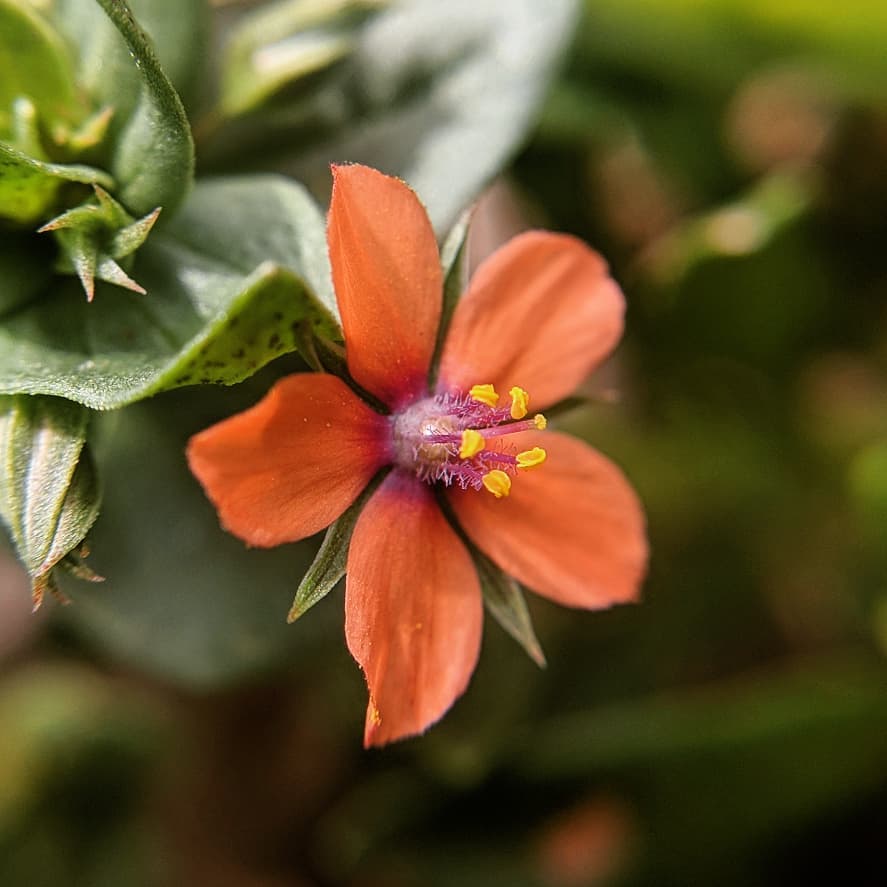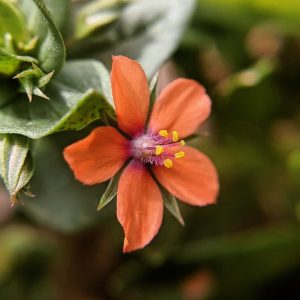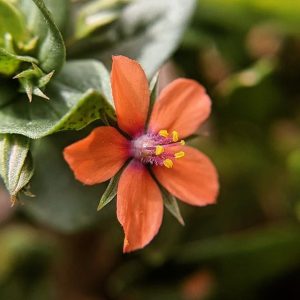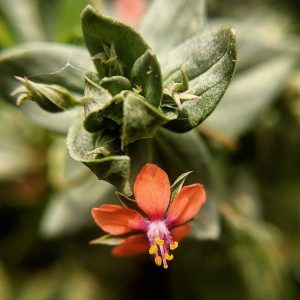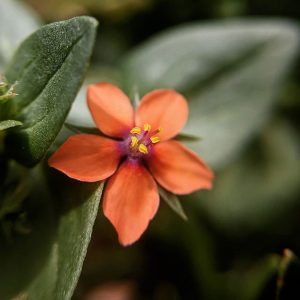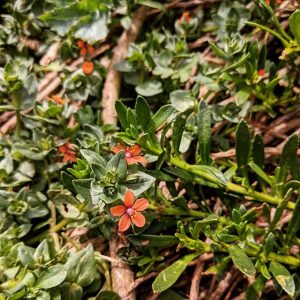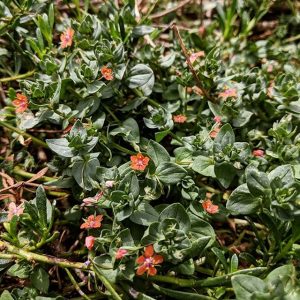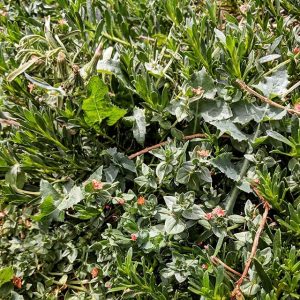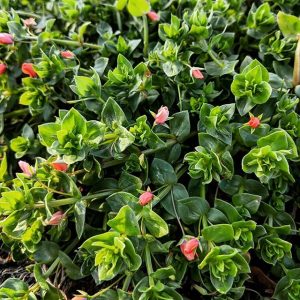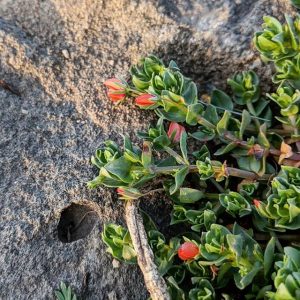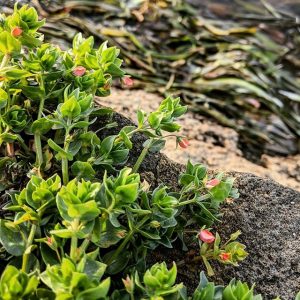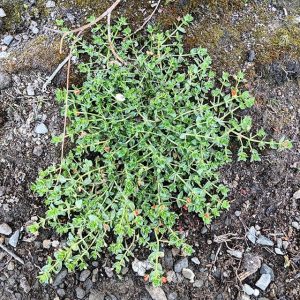Pimpernel (Lysimachia arvensis) of the scarlet variety. Commonly known to past generations as the shepherd’s or poor man’s weatherglass (for its weather-responsive flowers), this is a European-origin primrose that has achieved global distribution thanks to both intentional planting as an ornamental and unintentional distribution as a contaminant.
In Victoria, Pimpernel is a pasture weed, an environmental invader of scrub and riparian, and a pervasive colonist of developed and disturbed ground throughout the state. It was reported naturalised by the 1840s in NSW (Sydney Herald 24/02/42) and in WA (Inquirer 22/02/43). In Melbourne, Pimpernel (then known as Anagallis arvensis) was available for purchase from at least 1860 in both its red and blue forms, and the next year the Victorian Farmers Journal and Gardeners Chronicle was recommending several varieties as bedding plants. An 1868 column in the Bendigo Observer reported the scarlet form naturalised in areas around Bendigo, and both colour forms were formally recorded by botanists in the vicinity of Melbourne by 1883.
Although not listed as a noxious weed, Pimpernel has been rarely but repeatedly identified as the culprit in incidents of sheep and cattle poisoning in Victoria and other states. An intoxicant and a cause of gastroenteritis and kidney failure, this small-statured plant would normally be ignored by livestock but in years with strong summer rainfall it produces atypically verdant foliage, apparently making it a more tempting forage for stock on otherwise marginal lands.
View Original Post on Instagram
Search for information about Lysimachia arvensis in the Flora of Victoria
View information and occurrences of Lysimachia arvensis on the Atlas of Living Australia
